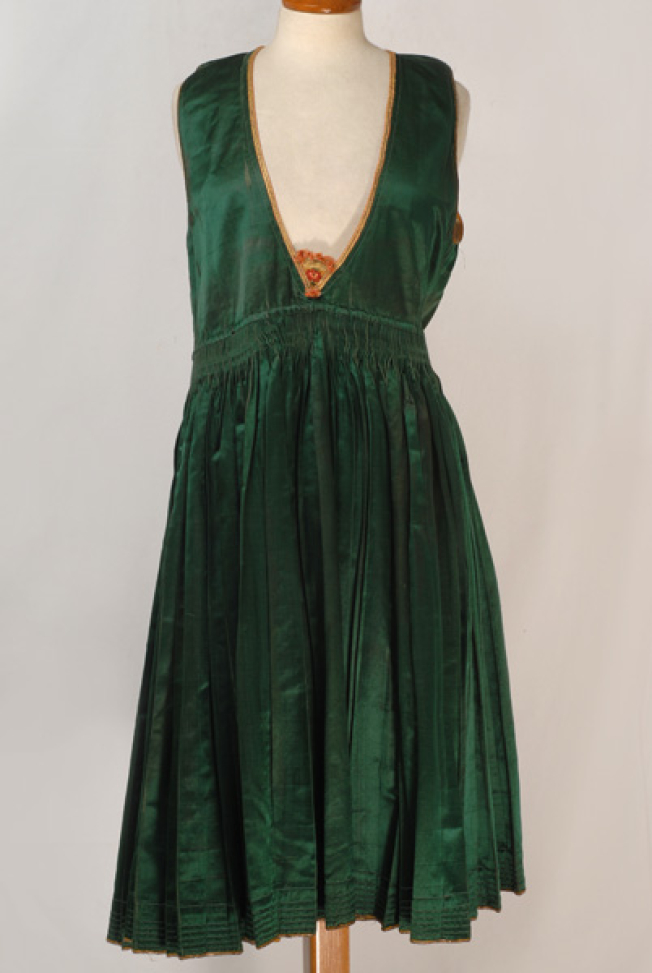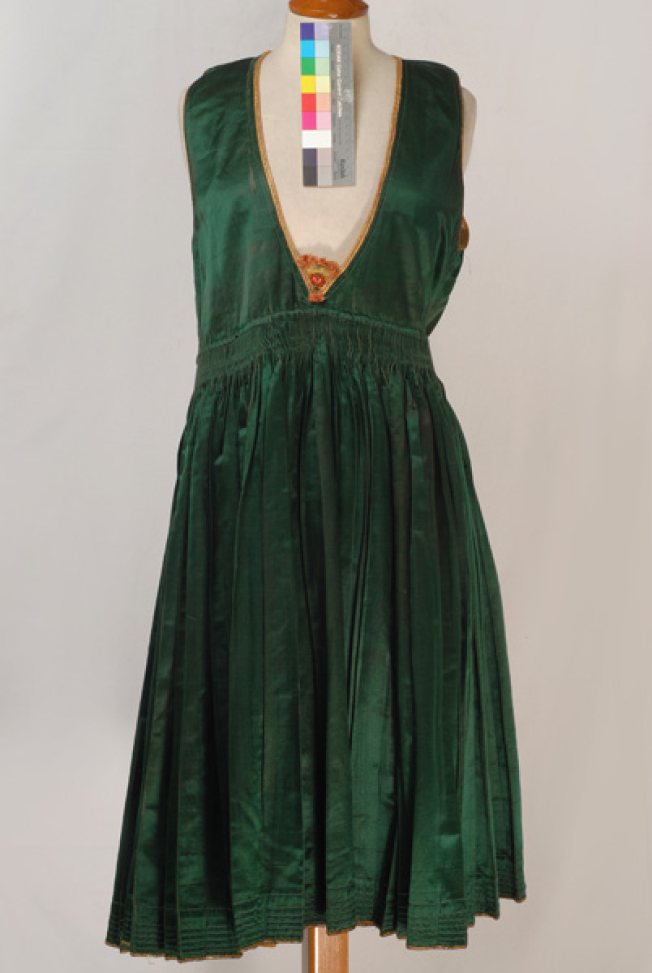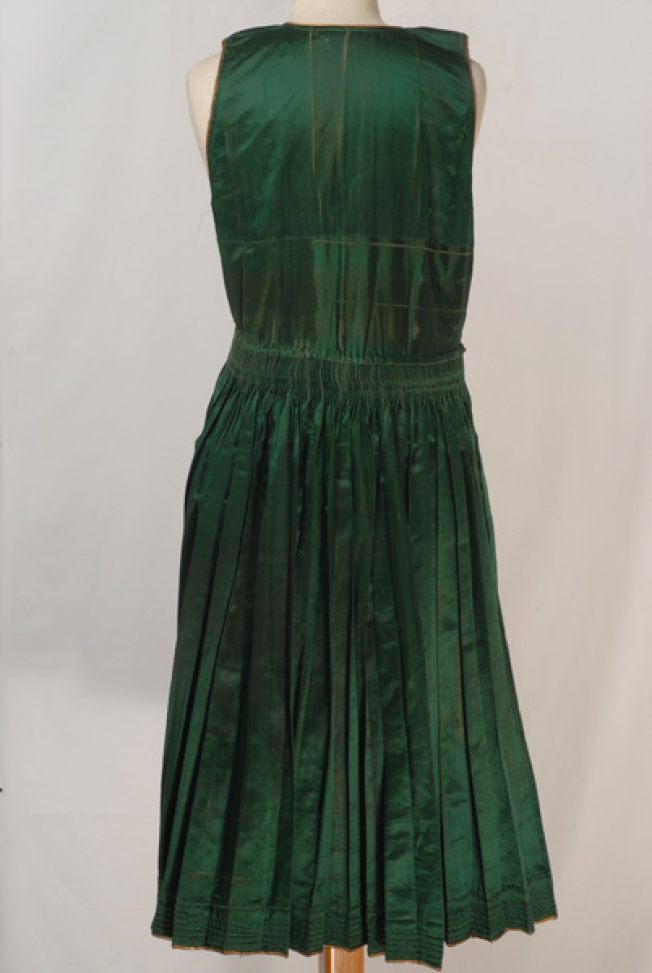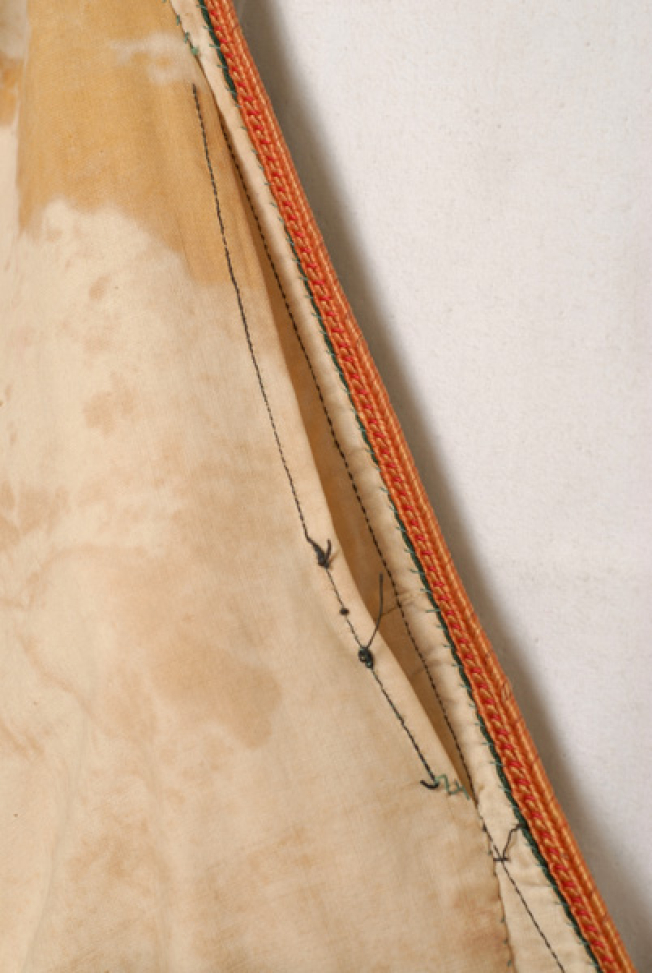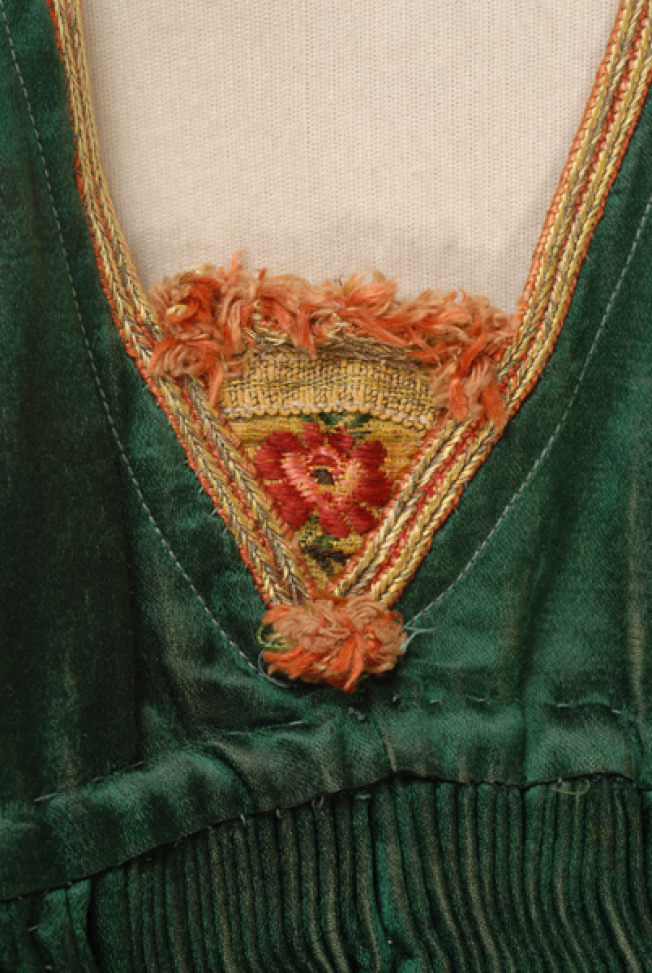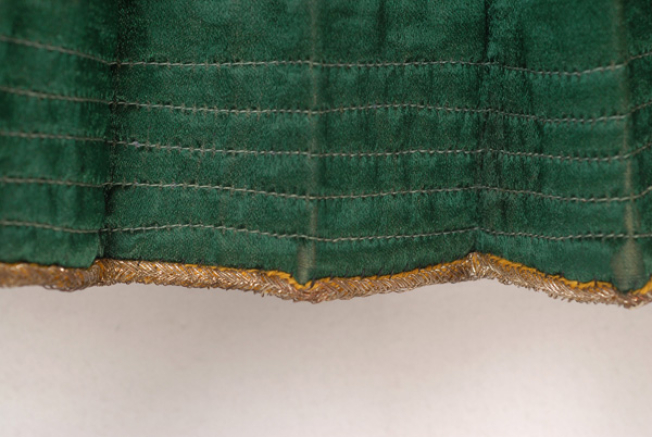foustani (dress)
6389/9
Object Identity
Object ID Number
6389/9
Object name
foustani (dress)
Other / Local name
f'stana
Style
island, renaissance type
Production date range
end of 19th century - beginning of 20th century
Part of outfit
No
Physical Description
Description
Φ'στάνα, γιορτινό, αμάνικο, γυναικείο φουστάνι από πράσινο ατλάζι. Αποτελείται από δύο τμήματα, το πανωκόρμι και τη φούστα. Το πανωκόρμι φέρει βαθύ άνοιγμα τύπου V στο στήθος, ως τη μέση, και είναι φοδραρισμένο με αστάρι, χασέ. Αριστερά, φέρει εσωτερικό τσεπάκι, το καρφοτσίπουνο. Στα ανοίγματα είναι ρελιασμένο με διπλό γαϊτάνι από σωμόν μεταξωτή κλωστή και χρυσόνημα. Στο άνοιγμα του στήθους, επίρραπτο τριγωνικό κομμάτι, το ψυχόρκο, από χρυσοΰφαντη, κλαδωτή, μεταξωτή στόφα, τρέσα χρυσή του εμπορίου και γαϊτάνι διπλό που καταλήγει σε φουντίτσες. Η στόφα αυτή συναντάται και στον ποδόγυρο των σκυριανών φουστανιών. Είναι κατασκευασμένη στη Γαλλία στις αρχές του 19ου αιώνα (γύρω στα 1840). Η φούστα ενώνεται με το πανωκόρμι με πλούσια σούρα. Έτσι σχηματίζονται 61 πιέτες, οι ντούκες, φάρδους 4εκ. η καθεμιά.
Σε απόσταση 8εκ. από το τελείωμα του φουστανιού, υπάρχουν οριζόντιες αναδιπλώσεις που διαμόρφωναν οριζόντια πιέτα, την πόστα, με σκοπό να φουντώνει το φουστάνι, η οποία πλέον έχει "ανοιχτεί" για να αυξηθεί το ύψος του ενδύματος. Η φούστα είναι αφοδράριστη εκτός από το σημείο του ποδόγυρου, όπου είναι φοδραρισμένη με γαλάζιο βαμβακερό ύφασμα. Στον ποδόγυρο, έξι οριζόντια γαζιά και το φουστάνι τελειώνει με μονή σειρά γαϊτάνι διπλό από κίτρινη βαμβακερή κλωστή και χρυσόνημα. Το φουστάνι δε φέρει άλλη διακόσμηση.
Decoration & Patterns
Decoration
vegetal decoration
Decorative patterns / subjects
-
Height
1.100
Production
Maker / Designer / Brand
special tailors
Production date range
end of 19th century - beginning of 20th century
Production place (Country | Geographic Area | Prefecture & Region)
Greece |
Thessaly |
Magnesia
Trikeri
Material
band
cotton
cotton cordon
gold thread
primer
satin
silk brocaded fabric
silk cordon
Techniques
applique
embellished
industrially woven textile
plisse
Use
User
woman
Occasion
festive
Date range
end of 18th century - beginning of 19th century
Place of use (Country | Geographic Area | Prefecture & Region)
Greece |
Thessaly |
Magnesia
Trikeri
Acquisition
Acquisition method
Gift
Collector
Koutlidi Chr.
Acquisition date (circa)
3/7/1970
Documentation
Research bibliographic references
Image license
Use the file or the thumbnail of the image according to the license:
CC BY-NC-ND 4.0
Attribution-NonCommercial-NoDerivatives





